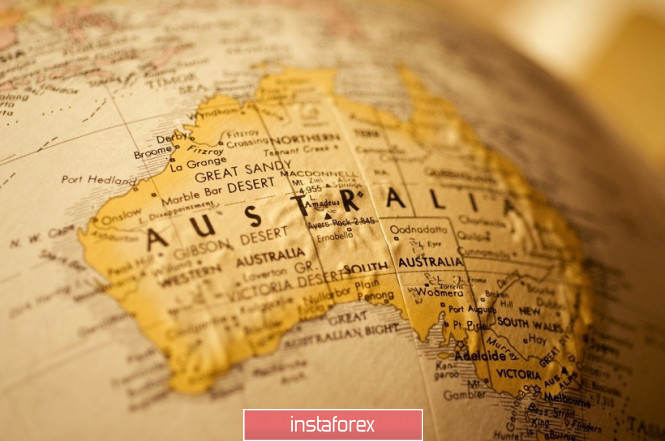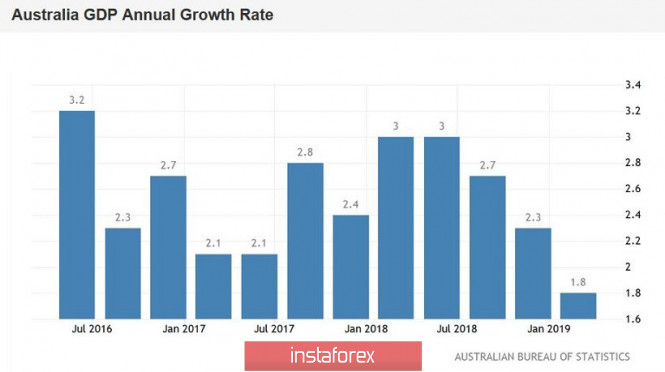The Australian dollar paired with the US currency overcame the key resistance level of 0.7000 at the end of last week, demonstrating a strong upward momentum. For two weeks, the pair grew steadily, rising from an annual low of 0.6838 to a local peak of 0.7027. But the bulls did not manage to stay at a high altitude: the US dollar strengthens its position against the background of the truce between the US and China, while the Australian dollar weakens throughout the market in anticipation of the July meeting of the RBA, which will be held on July 2 All other fundamental factors (for example, the continuing increase in the value of iron ore) are of secondary importance.

Recall that at the end of the G-20 summit, the United States agreed not to introduce additional tariffs on Chinese imports, while canceling certain (but not all) restrictions on the telecommunications giant Huawei. Beijing, in turn, agreed to resume purchases of American agricultural products (the volume and list of goods remain unknown). In general, the parties agreed to return to the negotiating table, giving traders hope for the de-escalation of the US-China conflict. On the first trading day of the week, this optimism prevailed throughout the market, which provided support to the dollar. The AUD/USD pair here is no exception: the greenback puts quite a strong pressure on the price - the aussie lost more than 150 points in half a day.
On the one hand, the trade truce between the United States and China is good news for the Australian currency, since the Australian economy is quite dependent on the Chinese. But the main beneficiary of the current situation is still the US dollar, since the risk of aggressively lowering the interest rate of the Fed has decreased significantly. The market does not exclude the possibility of monetary policy easing at the next meeting or in September, but almost completely eliminated the option of a one-time rate reduction by 50 basis points at once. Before the G20 summit, the probability of such a move was 26%. Also, some experts today suggested that the US regulator would take a wait-and-see attitude, postponing consideration of the issue of reducing rates for the second half of autumn. There are a lot of versions, but most of them boil down to the fact that the Fed will reconsider its position due to a decrease in geopolitical tensions.
Although, in my opinion, the market makes premature conclusions, and the US dollar is growing only on emotions, the fact remains: anti-risk sentiment has now dropped, the trade war has been paused, and the likelihood of the Fed's aggressive actions regarding the rate cut has decreased to almost zero. All this makes it possible for the greenback to dominate in nearly all dollar pairs, including in conjunction with the Australian dollar, which is waiting for the next round of the RBA rate cut.
The minutes of the June meeting of the Reserve Bank of Australia, published 2 weeks ago, made it clear that the regulator would not be satisfied with a one-time rate reduction: according to members of the regulator, further easing of monetary policy may be needed "soon" against the ambiguous situation in the labor market and the economy as a whole . Australian GDP growth in the first quarter really slowed to a ten-year low. GDP grew by only 1.8% over the same period last year. Compared with the previous quarter, the key indicator increased in January-March by 0.4%. The result was weaker than even the most pessimistic forecasts. The unemployment rate also shows a negative trend: in April it rose to the level of 5.2% and in May remained at the same values, although experts predicted a decline to the 5% mark. The increase in the number of employees should also be viewed through the prism of the structure of this indicator. In May, part-time employment increased significantly, while full-time employment (where higher wages) showed a minimal increase. This dynamic affects Australian consumer activity and ultimately inflation.

The head of the RBA recently spoke about the existing probability of interest rate reduction. At the beginning of the week before last, he said that a one-time reduction in the rate to a record-low level of 1.25% would not be enough to stimulate economic growth. By this, he confirmed the market's concerns regarding the future actions of the Australian regulator. In addition, currency strategists at Westpac (one of the largest banks in Australia) again reminded of their forecast - in February they warned that the RBA would lower the rate twice even three times this year. After the relevant comments of Lowe, it became clear that the sounded scenario may well come true.
Chinese data also added fuel to the fire. The manufacturing index PMI, calculated by Caixin, fell in June to 49.4 points. For the first time in four months, the indicator fell below the key mark of 50 - this indicates that manufacturing activity in China fell in June against the background of a trade conflict with the US
Thus, the Reserve Bank of Australia is likely to lower its interest rate by 0.25% tomorrow. This fact is already partially taken into account in prices, so the initial effect will be limited to the support level of 0.6930 (at this price point, the Tenkan-sen Kijun-sen lines on the daily chart intersect). Further price dynamics will depend on the rhetoric of Philip Lowe. If he allows further easing of monetary policy, AUD/USD will go to the support level of 0.6850 (the bottom line of the BB on the daily and weekly charts). If the regulator will assure the market that now the RBA will take a wait-and-see position, a rebound to the level of 0.7000 is not excluded, with a possible overcoming of this price barrier. Therefore, one should not trust the initial reaction of the market to the decision of the Australian central bank, especially considering the fact that the speech of the head of the RBA will take place 5 hours after the announcement of the results of the July meeting.
The material has been provided by InstaForex Company - www.instaforex.com